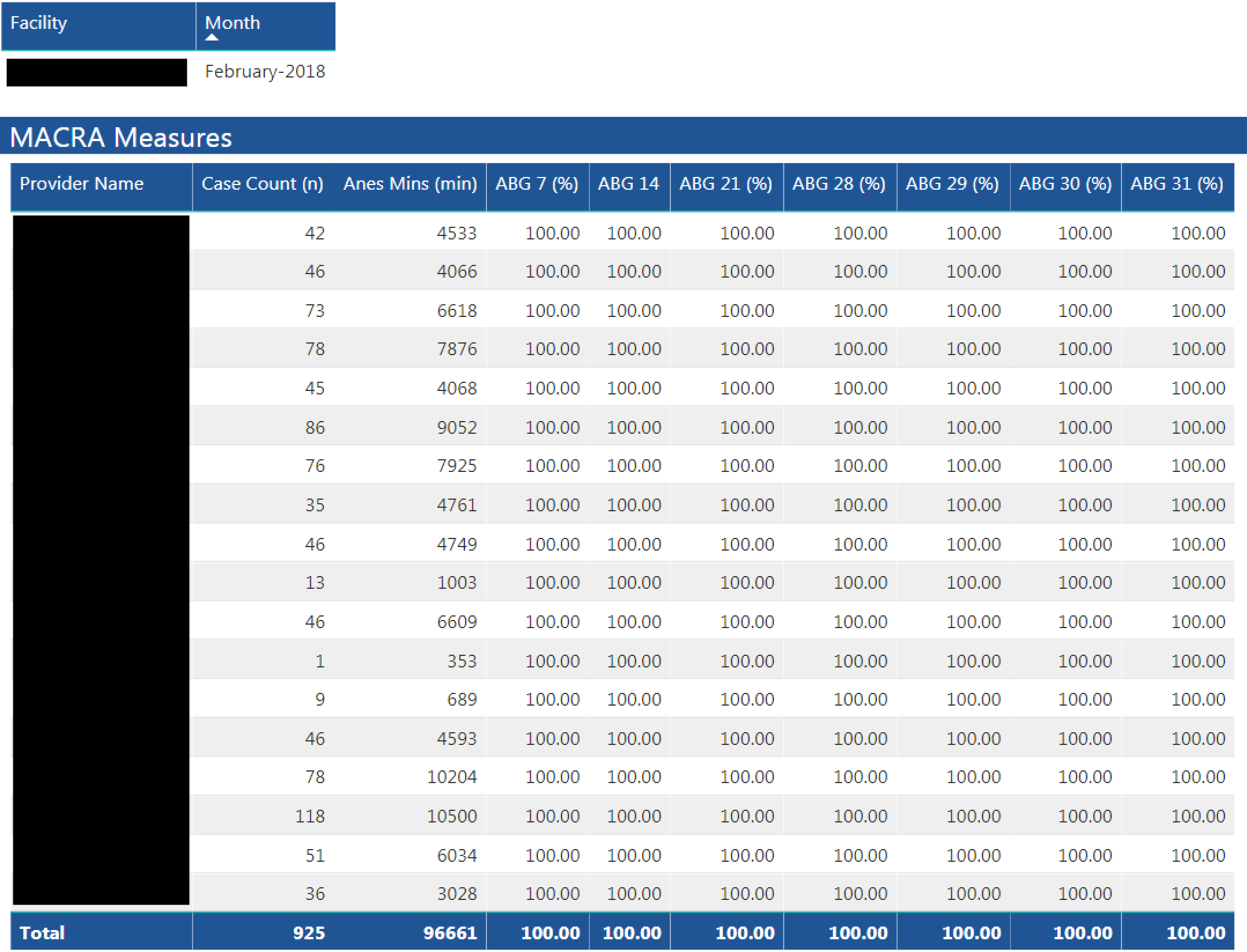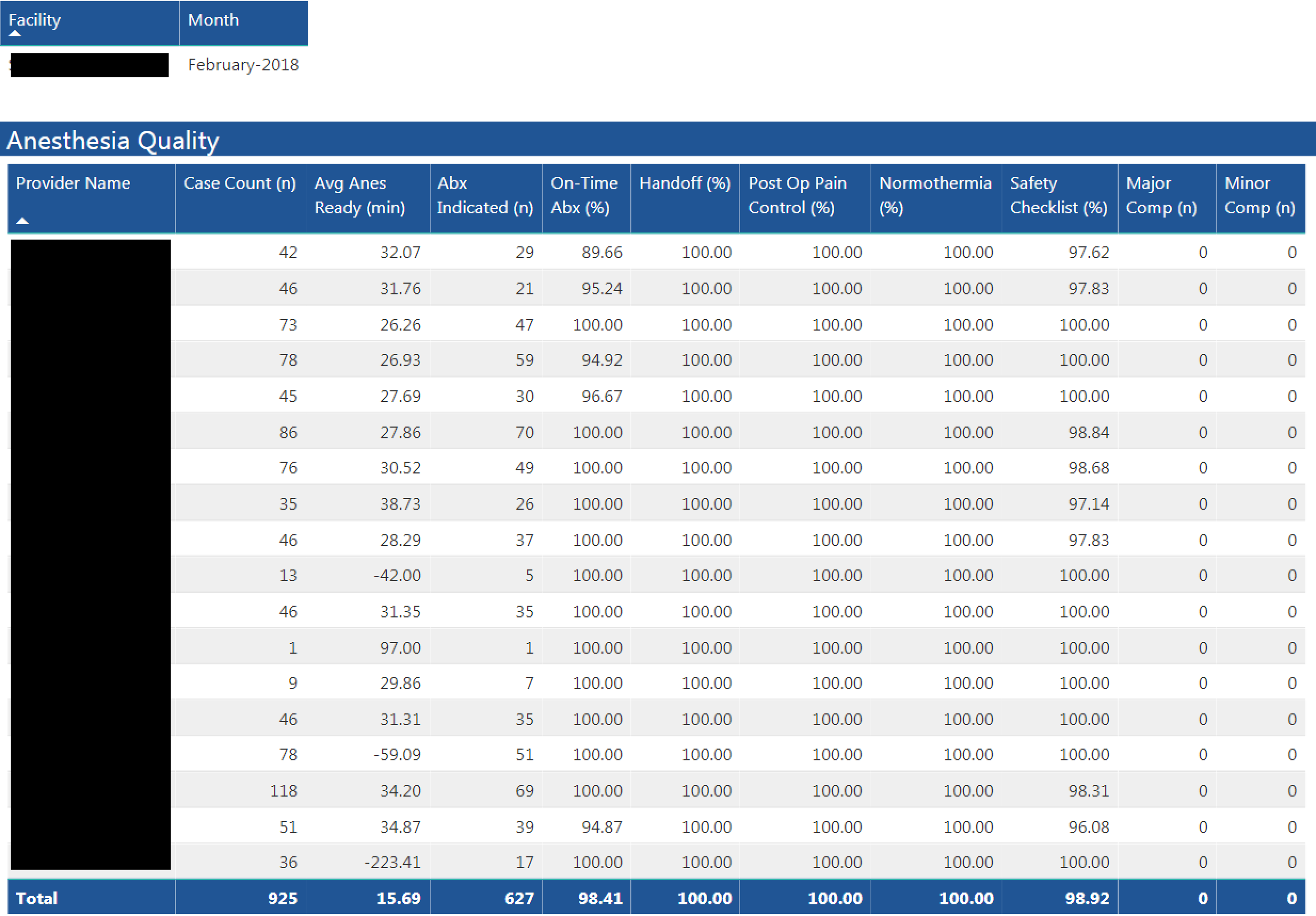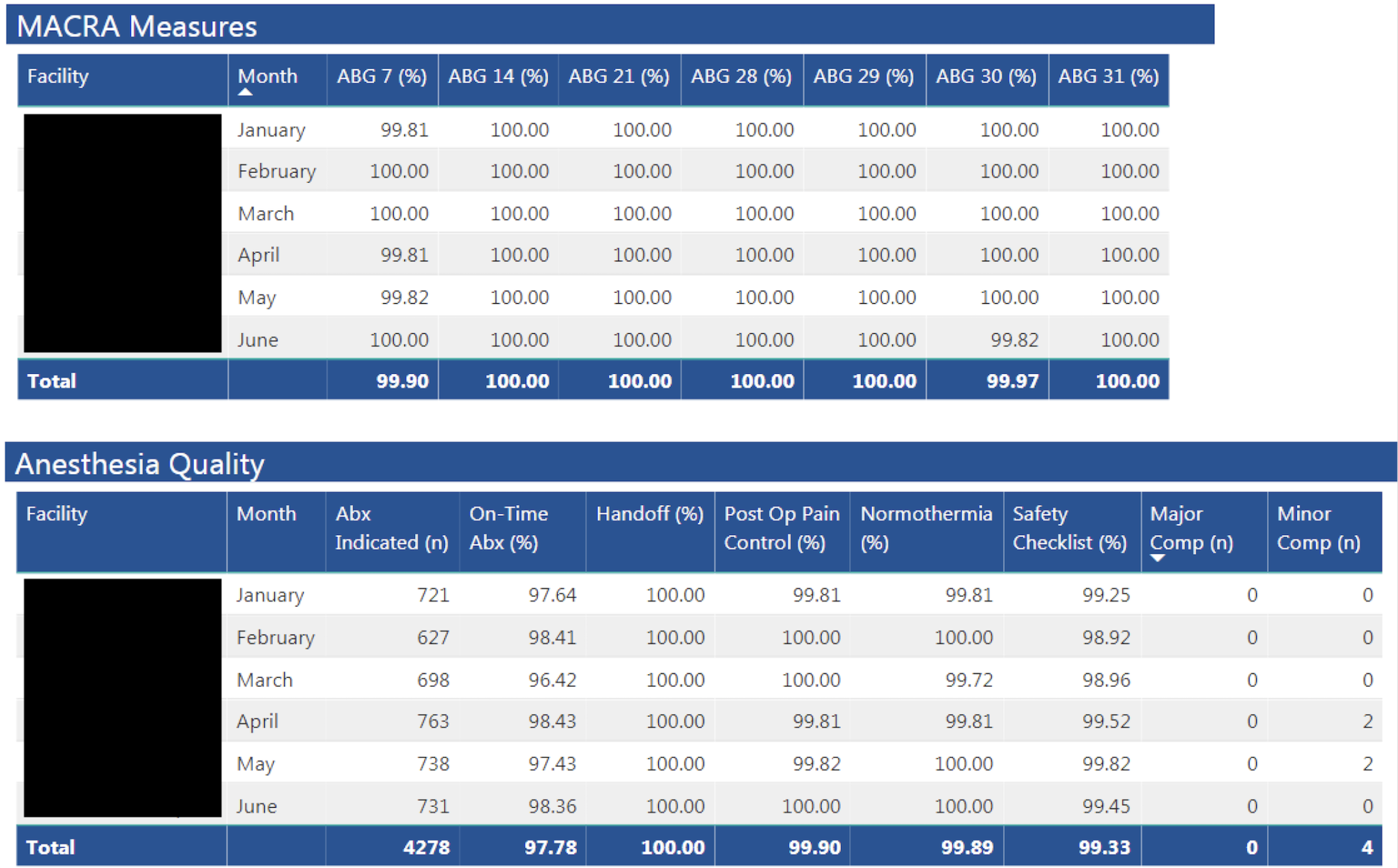
While CMS has incentivized MACRA compliance through a complex series of negative payment adjustments, positive payment adjustments, and “Exceptional Provider” bonuses, we see the market finding additional ways to leverage their MACRA data for additional value, including:
- The Joint Commission (TJC) Quarterly Quality Reports
- Hourly OR Utilization Heat Maps and Optimization
- Detailed quantitative marketing for new contracts
- Ongoing Professionalism Practice Evaluation (OPPE)
This brief article summarizes the OPPE requirements facing Facilities who choose TJC for credentialing and explains how and why your group’s MACRA data can forge more helpful relationships with your Facility leadership.
What is OPPE?
OPPE stands for Ongoing Professionalism Practice Evaluation and is often discussed in concert with “FPPE”, or Focused Professional Practice Evaluation. Defined and overseen by TJC, both FPPE/OPPE establish guidelines on how Facilities initially approve and then maintain clinician privileges. Importantly, the purpose of FPPE is to validate a clinician’s initial competency. Whereas OPPE’s purpose is to have an ongoing review of a clinician’s privileges in order to validate their competence and to identify their practice trends in “regular timed intervals”.
OPPE Requirements “Loosely” Defined
While TJC outlines the structure for the OPPE process, they are careful to avoid being too rigid. For example, they require “regular timed intervals” and then give latitude to the Facility to set this interval:
The frequency of such evaluation can be defined by the organized medical staff, but must occur more frequently than every 12 months. For example, three months, six months, nine months, etc., would be acceptable. Nine months may not be practical since you would have two complete sets of data and one incomplete set at the two year renewal. Completing the OPPE every 12 months would be considered periodic, and therefore, not compliant. For consideration, many organizations use eight months so they will have three complete sets of data at the two year renewal and they can assess for patterns or trends from one set to the next. (TJC Website)
In another example of flexibility, TJC requires “measures to be clearly defined” and then allows each Facility to determine the best measures to use. Unfortunately, we see many Facilities continuing to support their OPPE process with the following:
- Peer Review
- Complaints and incident reports
- Lawsuits
- Sentinel Events
- M&M conferences
- First hand observer reports
The OPPE Problem
Such approaches present today’s anesthesia providers with several concerns. First, Peer Review, lawsuits, M&M conferences, etc. tend to cover very unique and complex surgical cases when the “correct” answer may NOT exist. They are rarely black and white discussions with objective, measurable conclusions. In fact, the clinical material covered by such cases should hardly be used to determine a clinician’s “competence”, and they are likely better suited for Oral Board exam questions.
Also problematic is the fact these cases are typically very rare. They ignore the 1,000s of other cases performed “without issue” by the same provider. Because of this limited incidence, most anesthesia providers having “zero” data over a given time interval to even evaluate. The Facility then suffers a mathematical handicap attempting to satisfy TJC’s requirement to “track and trend”. There’s simply not enough data to evaluate.
Finally, these often encountered approaches for OPPE remove any control you may have over your credentialing. That is, you don’t control when or if you get sued and you can’t control when a 3rd party files a complaint against you. Instead of allowing your credentialing to hinge on events you don’t control, what if you could submit data for the things you do control? Thankfully, this is exactly where your MACRA data can really shine.
Leveraging Your MACRA Data
For over 10 years, MACRA (previously PQRS) compliance has illustrated just how difficult it is to define “quality” measures for a given specialty – anesthesiology, in particular. To assist with this challenge, national specialty societies and Qualified Clinical Data Repositories (QCDRs) have spent years certifying clearly defined, anesthesia-specific quality measures with CMS.
Here are the measures we are able to report each month for each provider to Facilities every quarter for OPPE compliance, and as a convenient upside, your “Performance Met” for each measure should be exceedingly high.
MACRA Measures
- ABG 7: Immediate adult post-operative pain management
- ABG 14/36: Corneal abrasion
- ABG 21: Pre-op OSA assessment
- ABG 28: Pre-op screening for GERD
- ABG 29: Pre-op screening for Glaucoma
- ABG 30: Pre-op screening for PONV risk
- ABG 31: Pre-op screening for excessive alcohol and recreational drug use

Figure 1: Individual Provider MACRA Results. Easily compare all individual providers performing services at the Facility for each month.
Anesthesia Quality Measures
- Handoff Protocol Used
- Post Op Pain Control
- Normothermia
- Safety Checklist Used
- Major Complications
- Minor Complications

Figure 2: Individual Provider Anesthesia Quality Measures. Beyond QCDR measures, some anesthesia based processes may be used to reflect quality and competence of individual providers at a given Facility.
Benchmarking
Importantly, using such an approach for OPPE provides ample amounts of data for your Facility to not only “track and trend” individuals, but to also perform actual comparison with their Facility averages.

Figure 3: Benchmarking. Individual MACRA compliance may be easily benchmarked against Facility average for the entire group, allowing you to identify any outliers.
Conclusion
Your data has power. It may feel mundane to capture the same data points on every case throughout the day, but those data ponts add up to tell a very compelling story that can affect the entire trajectory of your practice’s performance.
We see Facilities often struggling to meet OPPE requirements and the processes they have in place may not be the most helpful. Thankfully, your MACRA data provides you the option to improve your Facility’s OPPE compliance with more accurate and more frequent measurement of each anesthesia provider’s performance.
Your adoption of an intelligent MACRA solution can bring you more revenue in both positive payment adjustments and CMS Exceptional Provider bonus pool, but it can also be far more.
This is why we spend the majority of our focus on simplifying your data capture and transforming that data into actionable insight. MACRA is more than just penalty avoidance. It’s an opportunity to strengthen and expand your relationships with the Facilities you serve in an effort to make your practice more competitive. Let us help you with getting compliant in 2018 and beyond, and while we’re at it, let us help you grow your practice.
“Organizations that have been able to collect meaningful data in an ongoing way, and provide that data to individual practitioners (particularly if accompanied by peer or benchmark data) have found that practitioners become actively engaged both in validating the data and in self-evaluation and modifications in practice.”
“High Reliability Healthcare”
The Joint Commission

